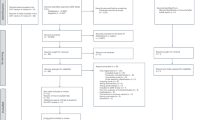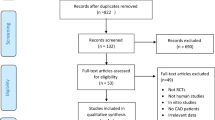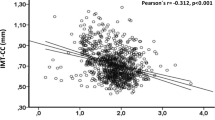Abstract
Atherosclerotic cardiovascular disease (CVD) is highly prevalent and, despite therapeutic advances, remains a leading cause of morbidity and mortality. Many patients with CVD seek additional alternative therapies when symptoms are not controlled with evidence-based therapies. Although its therapeutic efficacy is unproven, chelation therapy with ethylenediamine tetra acetic acid (EDTA) is increasingly being used in patients with CVD. Early studies of chelation in atherosclerotic CVD provided the basis for the randomized Trial to Assess Chelation Therapy (TACT), in which chelation with disodium EDTA was compared with placebo in patients who had experienced a myocardial infarction. Here, we discuss the results, limitations, and implications of TACT in the context of other studies in the field. We believe that the findings from TACT are not robust and do not marshal evidence in support of the potential clinical use of chelation therapy for CVD, with the potential exception of certain high-risk cohorts such as patients with diabetes mellitus. Therefore, chelation is unlikely to become a widely-accepted approach until additional data are available.
This is a preview of subscription content, access via your institution
Access options
Subscribe to this journal
Receive 12 print issues and online access
$209.00 per year
only $17.42 per issue
Buy this article
- Purchase on Springer Link
- Instant access to full article PDF
Prices may be subject to local taxes which are calculated during checkout
Similar content being viewed by others
References
Ehrlich, S. D. University of Maryland Medical Center. Ethylenediaminetetraacetic acid. [online], (2013).
Berg, J., Tymoczko, J. L. & Stryer, L. Biochemistry 6th edn (Freeman, 2006).
Vilensky, J. A. & Redman, K. British anti-lewisite (dimercaptol): an amazing history. Ann. Emerg. Med. Mar. 41, 378–383 (2003).
Peters, R. A., Stocken, L. A. & Thompson, R. H. British anti-lewisite (BAL). Nature 156, 616–619 (1945).
Barnes, P. M., Bloom, B. & Nahin, R. L. Complementary and alternative medicine use among adults and children: United States, 2007. Natl Health Stat. Report 12, 1–23 (2008).
Clarke, N. E., Clarke, C. N. & Mosher, R. E. The in vivo dissolution of metastatic calcium: an approach to atherosclerosis. Am. J. Med. Sci. 229, 142–149 (1955).
Clarke, N. E., Clarke, C. N. & Mosher, R. E. Treatment of angina pectoris with disodium ethylene diamine tetraacetic acid. Am. J. Med. Sci. 232, 654–666 (1956).
Suzuka, T., Furuya, A., Kamada, A. & Nishihata, T. Effect of phenothiazines, disodium ethylenediaminetetraacetic acid and diethyl maleate on in vitro rat colonic transport of cefmetazole and inulin. J. Pharmacobiodyn. 10, 63–71 (1987).
Meltzer, L. E., Palmon, F. P. Jr & Kitchell, J. R. Hypoglycaemia induced by disodium ethylenediamine tetraacetic acid. Lancet 16, 637–638 (1961).
Lamas, G. A. et al. Effect of disodium EDTA chelation regimen on cardiovascular outcomes in patients with previous myocardial infarction: the TACT randomized trial. JAMA 309, 1241–1250 (2013).
Boyle, A. J., Jasper, J. J. & McCormic, H. Clinic and therapy: studies in human and induced atherosclerosis employing ethylene diamine tetraacetic acid. Bull. Schweiz. Akad. Med. Wiss. 13, 408–425 (1957).
Casdorph, R. H. EDTA chelation therapy: efficacy in atherosclerotic heart disease. J. Hol. Med. 3, 53–58 (1981).
Clarke, N. E. Sr, Clarke, N. E. Jr & Mosher, R. E. Treatment of occlusive vascular disease with disodium ethylene diamine tetraacetic acid (EDTA). Am. J. Med. Sci. 239, 732–744 (1960).
Lamar, C. P. Chelation therapy of occlusive arteriosclerosis in diabetic patients. Angiology 15, 379–395 (1964).
Nissel, H. Arteriosclerosis and chelate therapy [German]. Wien. Med. Wochenschr. 136, 586–588 (1986).
Olszewer, E., Sabbag, F. C. & Carter, J. A. A pilot double blind study of sodium magnesium EDTA in peripheral vascular disease. J. Natl Med. Assoc. 82, 173–177 (1990).
Guldager, B. et al. EDTA treatment of intermittent claudication—a double-blind, placebo-controlled study. J. Intern. Med. Mar. 231, 261–267 (1992).
van Rij, A. M., Solomon, C., Packer, S. G. & Hopkins, W G. Chelation therapy for intermittent claudication. A double blind, randomized, controlled trial. Circulation 90, 1194–1199 (1994).
Godfrey, M. E. EDTA chelation as a treatment of arteriosclerosis. N. Z. Med. J. 103, 162–163 (1990).
Casdorph, R. H. & Farr, C. H. EDTA chelation therapy III: treatment of peripheral arterial occlusion, an alternative to amputation. J. Hol. Med. 5, 3–15 (1983).
Olszewer, E. & Carter, J. P. EDTA chelation therapy: a retrospective study of 2,870 patients. J. Adv. Med. 2, 197–211 (1989).
Ernst, E. Chelation therapy for peripheral arterial occlusive disease: a systematic review. Circulation 96, 1031–1033 (1997).
Ernst, E. Chelation therapy for coronary heart disease: an overview of all clinical investigations. Am. Heart J. 140, 139–141 (2000).
Knudtson, M. et al. Chelation therapy for ischemic heart disease: a randomized control trial. JAMA 287, 481–486 (2002).
Hlatky, M. A. et al. A brief self-administered questionnaire to determine functional capacity (the Duke Activity Status Index). Am. J. Cardiol. 64, 651–654 (1989).
Ware, J. E. Jr, Kosinski, M. & Keller, S. D. SF-36 Physical and Mental Health Summary Scales: A User's Manual (Quality Metric Inc., 1994).
Spertus, J. A. et al. Development and evaluation of the Seattle Angina Questionnaire: a new functional status measure for coronary artery disease. J. Am. Coll. Cardiol. 25, 333–341 (1995).
Escolar, E. et al. The effect of an EDTA-based chelation regimen on patients with diabetes mellitus and prior myocardial infarction in the Trial to Assess Chelation Therapy (TACT). Circ. Cardiovasc. Qual. Outcomes http://dx.doi.org/10.1161/CIRCOUTCOMES.113.000663.
Author information
Authors and Affiliations
Contributions
M. S. Sidhu and B. M. Saour researched data for the article. M. S. Sidhu and W. E. Boden both made substantial contributions to the discussion of content. M. S. Sidhu, B. M. Saour, and W. E. Boden wrote the article and edited/reviewed the content before submission.
Corresponding author
Ethics declarations
Competing interests
The authors declare no competing financial interests.
PowerPoint slides
Rights and permissions
About this article
Cite this article
Sidhu, M., Saour, B. & Boden, W. A TACTful reappraisal of chelation therapy in cardiovascular disease. Nat Rev Cardiol 11, 180–183 (2014). https://doi.org/10.1038/nrcardio.2013.176
Published:
Issue Date:
DOI: https://doi.org/10.1038/nrcardio.2013.176
This article is cited by
-
Treatment of refractory angina in patients not suitable for revascularization
Nature Reviews Cardiology (2014)



